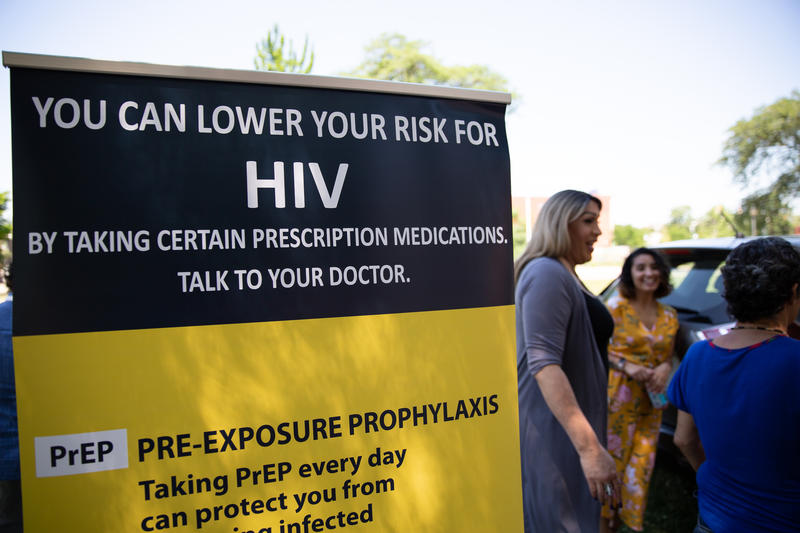In Fight Against HIV, Outreach Workers Take ‘PrEP’ To The Streets

Tatiana Melendez, standing tall next to the PrEP promotional poster, is doing HIV prevention outreach at Hartford’s Barnard Park on a recent Friday. Melendez, a.k.a. Lady Tatiana, began working for the Community Renewal Team in May as its PrEP navigator. Photo by Ryan Caron King for Connecticut Public Radio
Tatiana Melendez waited in the shade during a New England heat wave, ready to make a move.
“I got all the information for you, all right,” Melendez, 46, said as she handed a baggie of info to a passerby. “This is very good for you. For everybody doing sex.”
At Hartford’s Barnard Park, a triangular patch of grass interlocked by streets south of downtown, free HIV screenings were underway in the back seat of a grey Nissan Rogue. Of course, Melendez and her crew would like to identify who is HIV-positive, to provide them services and access to medication.
But they also want to know who is HIV-negative, because there’s a drug for them, too.
PrEP, or pre-exposure prophylaxis, can lower the risk of getting HIV through sex by more than 90 percent, according to the Centers for Disease Control and Prevention. People who inject drugs can cut their risk of HIV infection by at least 70 percent with PrEP.
Yet six years after the federal government approved the daily blue pill for HIV prevention, Connecticut public health officials say they are still trying to put PrEP on people’s radars, and into the hands of those most vulnerable to contracting the virus.
The state Department of Public Health says more than 15,000 Connecticut residents could be at risk for HIV, which can cause AIDS without treatment.
But only about 700 adults, up to age 64, were on PreP in 2016, according to a state estimate.
